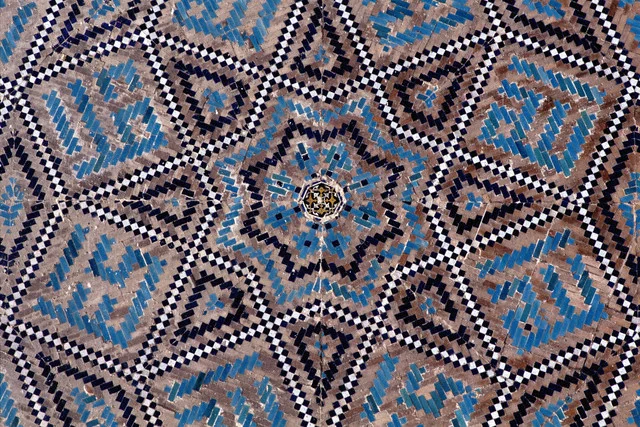When art displays such clarity that our perception is elevated to an almost spiritual experience, when working out details requires great application – something akin to religious fervor… we use the expression “God is in the details.”1
The high quality of Muslim workmanship in so many fields - in carpets, ceramics, woodwork, the arts of the book, architecture and garden design – are well-known, as are its refined standards of taste. There are some key elements of this type of garden design that should be taken into account when developing an Islamic landscape or any classic garden design.
A perfect garden - Islamic inspired garden designs are meant to be representations of paradise
“The aim seems always to be towards perfection, of style and execution. At their best, the arts of Islam manage to combine the sensual with the spiritual. In this culture, beauty, represented by colors and forms, and Perfection, as expressed in the production of artifacts, always seem ultimately to refer to the numinousness of the divine.” –David Wade
The image of an luxuriant sheltered landscape design, full of sensual delights beyond imagination is the Garden of Eden. Paradise is frequently symbolized and directly referenced in Islamic art and architecture, as is the image of the garden or garden design. Carpets are commonly reminiscent of an idealized garden design.
Even with exemplary craftsmanship and attention to detail, there are commonly small errors in these works!
According to Martin Lings, author of “Quranic art of calligraphy and illumination”, all Islamic artists make a deliberate error in their work on the grounds that only God Is perfect.
Within all artistic genres poetry, calligraphy, architecture, music, sculpture. painting, textile design and garden design – mathematical proportionality and harmony determined perfect beauty. Geometric forms were linked directly to Islam, as they were thought to symbolize the divine order of the universe. A geometric design was believed to help humans understand God's true nature, and Islamic geometric patterns usually include one error to remind the Muslim that only Allah is absolutely perfect.
…thus the traditional explanation for minor irregularities in the complex geometrical designs of Islamic art.
Court of the Lions, Alhambra image from pinged.com
IF YOU ENJOYED THIS POST, PLEASE LIKE OUR FACEBOOK PAGE AND VISIT IT FOR MORE CONTENT. THANK YOU!
1. This phrase has at times been attributed to Le Corbusier and allegedly coined by Mies van der Rohe.





